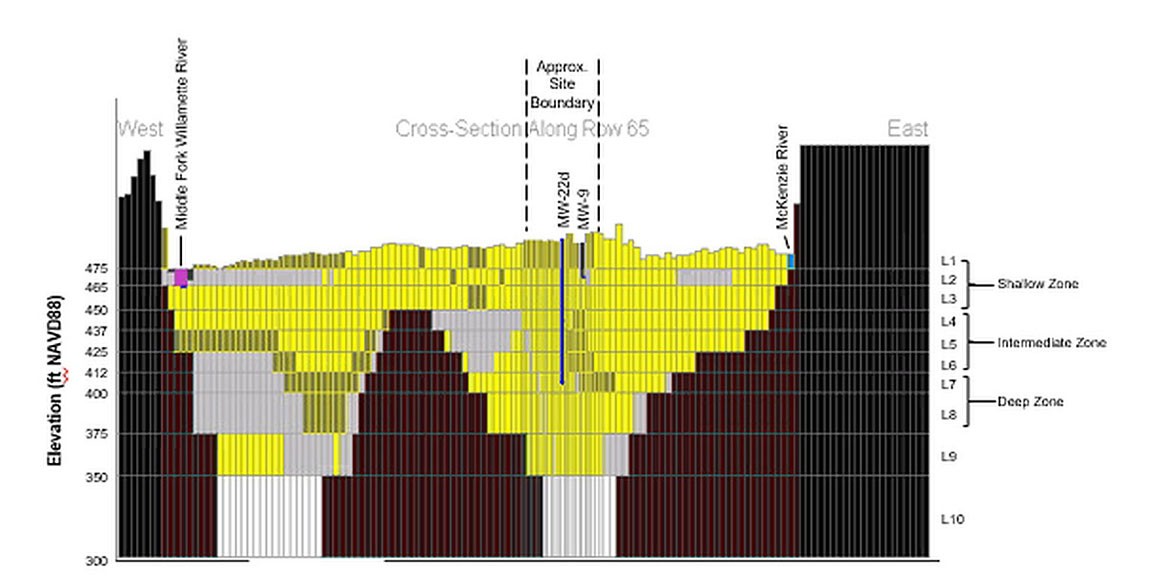Groundwater Flow and Transport Model of Pentachlorophenol Plume Attenuation: Oregon

OUR CHALLENGE
Pentachlorophenol (PCP) treatment was used at a sawmill from the early 1960s to mid-1980s. A PCP soil source was remediated in 1993; however, a dissolved PCP groundwater plume was migrating toward a municipal well field. Initial groundwater modeling, performed by a different consulting firm, predicted plume attenuation by 2011—this was the rationale for state acceptance of a natural attenuation remedy for the PCP plume. By 2011, the plume persisted and a second model was developed. The second model predicted the plume would attenuate in 65 years (by 2080). DEQ rejected the decades-long attenuation timeframe as not protective, and told our client to evaluate active remediation options.
OUR APPROACH
Concerned about model accuracy, our client asked us to conduct an independent model review. We found the second (2011) model was conceptually inaccurate and poorly calibrated, so we built and calibrated a 10-layer, 3‑dimensional numerical flow and transport model (MODFLOW-MT3D) that predicted PCP plume attenuation within 30 years. We presented model results to the regulator and nearby water districts.
OUR IMPACT
DEQ allowed ongoing plume natural attenuation based on our modeling results, and issued a letter accepting our model assumptions, calibration, and predicted results. The client saved potentially millions of dollars in active remediation costs. Subsequent groundwater monitoring data continue to validate our model and predicted plume attenuation timeframes.
